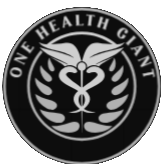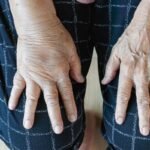Burns are one of the most common injuries. The vast majority occur accidentally at home or in the workplace, so anyone is susceptible to them.
Knowing what to do immediately after a burn occurs is essential to minimize the damage they can cause, both physically and mentally. Especially when they can cause significant functional and aesthetic consequences.
It’s important to remember that burns are the result of physical or chemical trauma that can cause anything from mild skin damage to destruction of the tissues involved.
There are different types of burns depending on the mechanism that causes them. Among the most common are those caused by a hot liquid (oil, boiling water, steam, etc.), fire, a hot solid (iron, oven, stove, exhaust pipe, etc.), electricity, chemicals, cold (freezer burns), and radiation (sunburns).
Depending on the depth of the burn, we talk about the degrees of burns: first-degree or epidermal burns, second-degree or superficial dermal burns, third-degree or deep dermal burns, and fourth-degree or full-thickness burns.
First aid for superficial burns can be provided at home, while medical attention should be sought for deeper burns.
First-degree burns are the most superficial, affecting only the epidermis (the outermost layer of the skin). This means that the skin’s integrity is preserved.
These burns are characterized by being the most painful, causing erythema (reddening of the skin) and mild inflammation. They do not cause blisters (burn blisters), usually heal spontaneously in about five days, and do not produce permanent skin scars.
Examples include mild sunburn or burns from hot water, the oven, an iron, or hair removal wax.
Superficial second-degree burns extend beyond the epidermis and partially damage the dermal layer (the second layer of skin). In these cases, burn blisters often appear, which, if removed or burst, become oozing, and the exposed skin becomes a deep red color.
These wounds can leave scars or cause skin depigmentation or dyschromia, especially when first aid for a burn is inadequate. They usually resolve within eight to ten days.
Common second-degree burns are those caused by contact with hot liquids (e.g., boiling oil), a flame, or exposure to diluted chemicals.
If you suffer severe burns that affect deeper tissue, seek immediate medical attention. This is also true if the burns affect a large area, occur on the face or sensitive areas, worsen in appearance, produce an unpleasant odor, or are accompanied by fever.
How to treat a burn
Because these are common injuries, it’s common for a person to experience these types of injuries on different occasions. However, older adults and children are the most susceptible groups.
Accidents are more frequent among them, and, due to the particularities of their skin, the injuries can be more serious.
In the case of children, their skin is more immature and up to 15 times thinner than that of adults, so they burn at lower temperatures and greater depth.
In older people, skin regeneration capacity is lower and slower, which makes wound healing difficult and increases the risk of complications.
Thus, knowing what to do in the event of a burn and what care should be taken is key.
– Assess the degree of the burn. If it is not a superficial burn (the burn is deep and affects other subcutaneous structures), cover it with sterile gauze and seek medical attention.
In the case of a first- or second-degree burn, first aid can be provided at home.
– Wash your skin. The first thing to do when you get a burn is to clean your skin and/or remove any traces of products (creams, depilatory waxes, etc.). You can use tap water (if it’s safe to drink), boiled water, distilled water, or saline solution.
After washing, dry the skin thoroughly by gently patting, avoiding rubbing the area.
– Apply cold water. Cold water for burns effectively reduces pain.
You can use running water (between 15 and 20º) for twenty minutes, place the affected area in a water bath, or apply cold compresses.
Very cold or icy water (<15º) should be avoided, as it causes vasoconstriction, which accelerates the progression of the local burn and increases the pain.
– Use a burn cream or gel. When a burn occurs, a physiological dehydration process begins. Therefore, the skin must be actively moisturized and supplemented with substances that aid in its recovery and maintenance of hydration.
In this regard, it is advisable to use a burn cream or gel that also contains restorative and regenerative substances.
The goal is to prevent dryness and promote the optimal environment for skin healing.
The benefits of aloe vera for burns are widely known. This is due to its acemannan content, polysaccharides that maintain skin hydration and promote tissue repair. In turn, aloe vera has a cooling and soothing effect, making it ideal for this type of wound.
Panthenol is another active ingredient widely used in burn creams. It is an active form of pantothenic acid ( vitamin B5) that has been used for years to protect the skin and improve skin regeneration.
Panthenol also reduces transepidermal water loss (common in burns), increases hydration of the stratum corneum, and has emollient and anti-irritant properties.
For all these reasons, it’s advisable to always include a burn cream or gel in your first aid kit. These products are also often recommended for cuts, abrasions, skin irritations, chafing, and other superficial injuries.
– Use corticosteroid creams . For very painful burns or those with significant inflammation, corticosteroid creams may be indicated.
However, its use should not be prolonged beyond 48 hours after the burn, and its potential side effects must be taken into account. These include delayed epithelialization and a decrease in immune defenses (which implies a higher risk of burn infection by fungi or bacteria or the development of herpes).
In this regard, it is worth remembering that burns themselves cause a loss of the barrier action against microorganisms, increasing susceptibility to infection.
– Remove burn dressings carefully. If burn dressings are used or if burns are covered with gauze or bandages, be very careful when removing them.
To do this, it is advisable to moisten the edges of the dressings to prevent them from adhering to the skin and to use minimal force.
– Monitor the progress of the burn. Burns appear dynamic during the first 48-72 hours, so pay close attention to their progress.
After these two or three days, it is advisable to re-evaluate the wound.
If the burn does not progress favorably and does not resolve within eight to ten days, you should consult a doctor.
What to do with burn blisters?
If you get a burn blister, you should never manipulate, cut, or pop it yourself.
The latest reviews of studies suggest that blisters with a diameter less than 6 mm should be left intact unless they interfere with movement or are bothersome.
Surgical debridement or cleaning of burn blisters of medium thickness is generally only recommended, and always by a healthcare professional.
Otherwise, the healing process may be disrupted, the risk of wound infections and complications may increase, and the result may be poor aesthetic and/or functional outcomes.





















+ There are no comments
Add yours